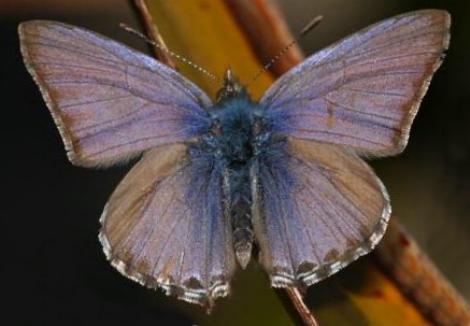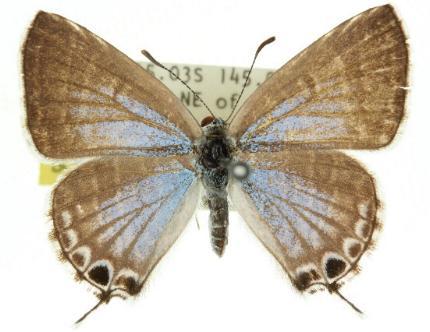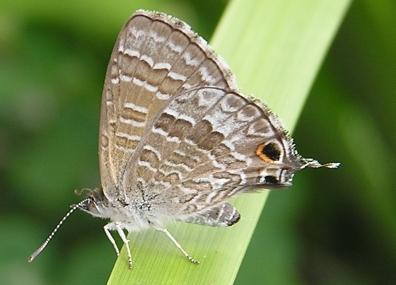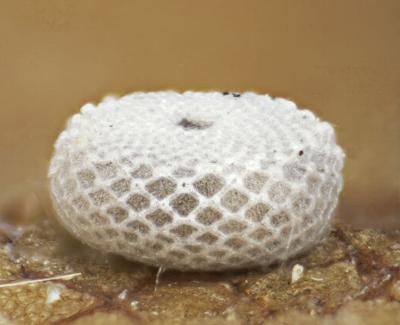
| Wattle Blue POLYOMMATINI, POLYOMMATINAE, LYCAENIDAE, PAPILIONOIDEA | (donherbisonevans@yahoo.com) and Stella Crossley |

male
(Photo: courtesy of Martin Purvis, Sydney, New South Wales)

| Wattle Blue POLYOMMATINI, POLYOMMATINAE, LYCAENIDAE, PAPILIONOIDEA | (donherbisonevans@yahoo.com) and Stella Crossley |

male
(Photo: courtesy of Martin Purvis, Sydney, New South Wales)
The Caterpillar of this species is dark green or brown, with a dark dorsal band, and faint pale diagonal streaks. and a pale brown head. It is sometimes accompamied by various species of black or green ants. It has a preference for feeding on young seedlings, particularly of such species as :

The adults are predominantly pale blue on top with narrow chequered margins. However, the females also have a broad black band around the margins, and a submarginal arc of white scalloped markings on the hindwings which end in a pair of black spots beside a short narrow tail.

Underneath, the wings are fawn, with several arcs of white scalloped markings. The hindwings also each have the two black spots underneath. The butterflies have a wing span of about 2 cms.

The eggs are disc-shaped, and pale green, with a complex microscopic surface structure. Their diameter is about 0.5 mm. They are laid singly on young shoots of a foodplant, often at the base of a leaf.
The species is found as various races in :
and in Australia where the races found are :
Further reading :
Michael F. Braby,
Butterflies of Australia,
CSIRO Publishing, Melbourne 2000, vol. 2, pp. 807-809.
Thomas P. Lucas,
On 34 new species of Australian Lepidoptera, with additional localities,
Proceedings of the Royal Society of Queensland,
Volume 6, Part 4 (1889), pp. 158-159, and also
Plate 9, figs. 5-7.
 caterpillar |  butterflies |  Lepidoptera |  moths |  caterpillar |
(updated 21 September 2001, 3 April 2025)